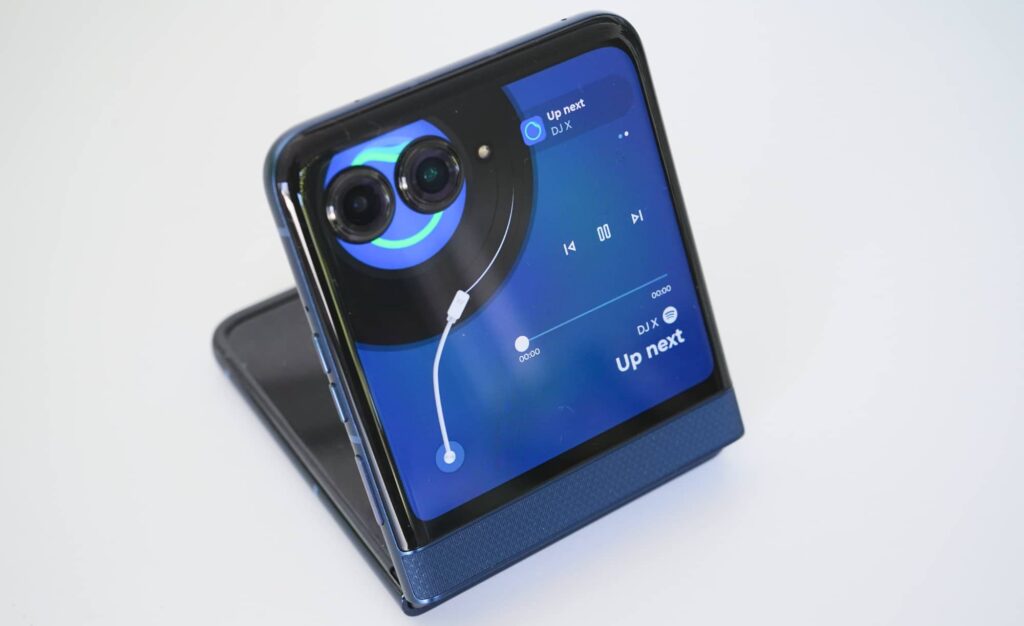
Motorola has launched the Razr 60 (XT-2553-1), a foldable phone priced at $1199, aiming to make foldable technology more accessible. This latest model is a testament to the ongoing trend of making advanced technology available at lower price points, a process known as the “democratization of technology.”
Foldable phones, once a luxury, are gradually becoming more affordable. The Razr 60 is the latest example of this trend, offering a blend of modern features and a nostalgic design at a price that challenges the status quo. But does it deliver on performance?
Design and Features: Nostalgia Meets Modernity
The Motorola Razr 60 continues the iconic design lineage of its predecessors. It features a sleek exterior with a 3.6-inch pOLED cover screen and a 6.9-inch pOLED main display. The phone’s design remains largely unchanged from the Razr 50, with a few updates in texture and color options, including “Gibraltar Sea” and “Parfait Pink.”
Under the hood, the Razr 60 is powered by a MediaTek Dimensity 7400X chip, a step up from the previous generation’s 7300X. It comes with 8GB of RAM, 256GB of storage, and runs on Android 15. The phone includes a 50-megapixel wide camera and a 13-megapixel ultra-wide camera, alongside a 32-megapixel front-facing camera.
The Razr 60 sports a 4500mAh battery, offering improved longevity over its predecessor, and supports both wired and wireless charging.
Performance: Incremental Improvements
While the Razr 60 does not represent a revolutionary leap in performance, it addresses some of the shortcomings of the Razr 50. The new chip provides a slight performance boost, reducing the lag that plagued the previous model. Benchmark tests indicate a modest improvement, though the Razr 60 still trails behind some older foldable models in terms of raw power.
In real-world usage, the phone handles everyday tasks with ease, and the camera operates more efficiently than before. The 5G connectivity delivers impressive speeds, enhancing the overall user experience.
Camera and Battery: Consistency with Minor Tweaks
The camera setup on the Razr 60 remains largely unchanged from the Razr 50, offering decent performance in well-lit conditions but struggling in low light. While the camera is not the standout feature, it is adequate for most users.
Battery life sees a slight improvement, thanks to the upgraded 4500mAh battery. Users can expect around 24 hours of usage, with the potential to stretch into a second day with moderate use. The inclusion of wireless charging adds convenience, though the lack of Qi2 support is a minor drawback.
Value Proposition: A Competitive Edge
At $1199, the Razr 60 positions itself as an entry-level foldable phone, a market segment with limited competition. Samsung’s Flip 7 FE, priced at $1499, is its closest rival, but Motorola’s offering is more affordable and includes a case in the box.
While the Razr 60 does not introduce groundbreaking changes, it represents a strategic move by Motorola to lower the barrier to entry for foldable technology. The phone’s price point reflects its status as a mid-range device, though some may argue that a price closer to $999 would be more appropriate.
“The Razr 60 is exactly what the 50 should have been. It’s a mid-range foldable that works.” – Industry Expert
Conclusion: A Step in the Right Direction
The Motorola Razr 60 is not a radical departure from its predecessor, but it is a meaningful improvement. By maintaining the same price as the Razr 50 while offering better performance and battery life, Motorola is making foldable phones more accessible.
As foldable technology continues to evolve, the Razr 60 serves as a reminder that innovation does not always require a complete overhaul. Sometimes, incremental improvements are enough to make a significant impact. For those seeking a foldable phone without breaking the bank, the Razr 60 is a compelling option.







